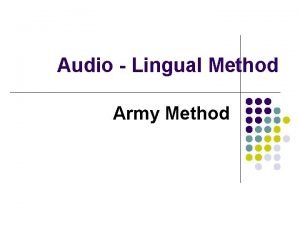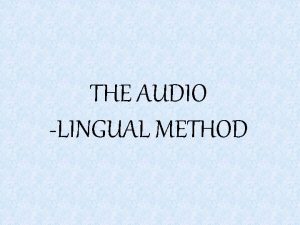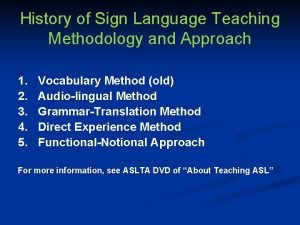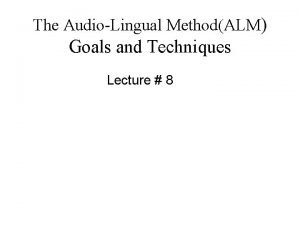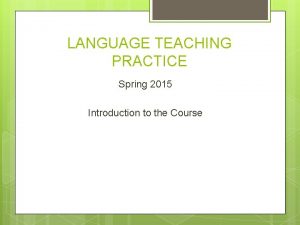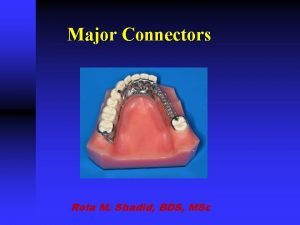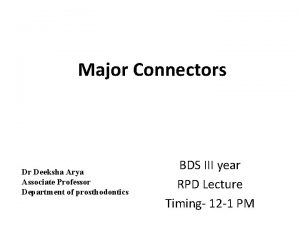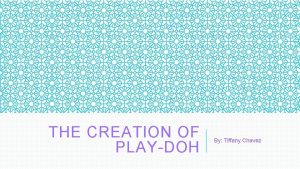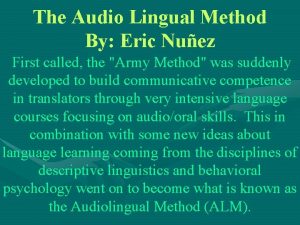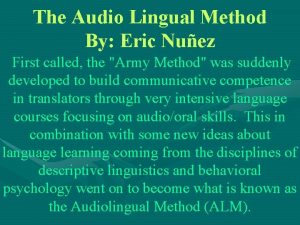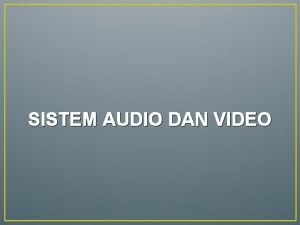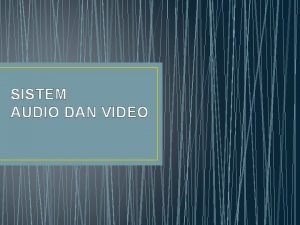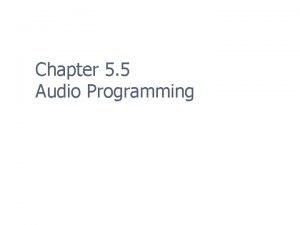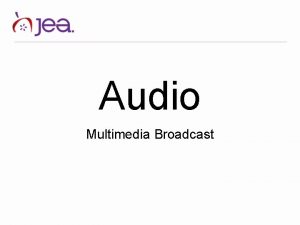Audio Lingual Method The method which was originally















- Slides: 15

Audio Lingual Method • The method which was originally introduced to prepare people to master foreign language orally in a short time, emphasizes oral forms of language. However, the method still considers the other language skills. The method considers that the oral forms; speaking and listening should come first and reading and writing come later.

• The emergence of the method was a response to the need for a radical change of foreign language teaching due to the unfriendly relationship between USA and Rusia, which launched its first satellite in 1957. The USA prevented its people from becoming isolated people from scientific advances made in other countries. The method was much influenced by a method called ASTP.

• The ASTP was triggered by the condition from which USA entered World War II and tried to send its army to take up positions in other countries. USA government found itself in a need of personnel trained in a large number and wide variety of language, and the ALM could be the answer. At that time, many Americans felt unsatisfied with the reading aim and they thought that speaking was more important than reading.

Principles of the ALM • Language is a system of arbitrary vocal symbol used for oral communication • Writing and printing are graphic representations of the spoken language • Language can be broken down into three major component parts: the sound system, the structure, and the vocabulary • The only authority for correctness is actual use of native speakers • One can learn to speak and understand a language only by being exposed to the spoken language and by using the spoken language.

• Languages can be learned inductively far more easily than deductively • Grammar should never be taught as an end in itself, but only as a means to the end of learning the language • Use of the students’ native language in class should be avoided or kept to a minimum in second language teaching • The structures to which the students are exposed to should always sound natural to native speakers • All structural material should be presented and practiced in class before the students attempt to study at home

The procedure of ALM • The language teacher gives a brief summary of the content of the dialogue. The dialogue is not translated but equivalent translation of key phrases should be given in order for the language learners to comprehend the dialogue • The language learners listen attentively while the teacher reads or recites the dialogue at normal speed several times. Gestures and facial expression or dramatized actions should accompany the presentation

• Repetition of each line by the language learners in chorus is the next step. Each sentence may be repeated a half dozens of times, depending on its length and on the alertness of the language learners. If the teacher detects an error, the offending learner is corrected and is asked to repeat the sentence. If many learners make the same errors, chorus repetition and drill will be necessary

• Repetition is continued with groups decreasing in size, that is, first the two halves of the class, then thirds, and then single rows or smaller groups. Groups can assume the speakers’ role • Pairs of individual learners now go to the front of the classroom to act out the dialogue. By this time they should have memorized the text.

Procedure of presenting dialogue • The dialogue should be short • The dialogue should have not more than three goals • The dialogue should contain repetition of new grammar • The context should be interesting for the language learners • Previous vocabulary and grammar should be included in the dialogue

Steps in listening • • • Motivation Introduction Anticipation of difficulties First listening Check on difficulties Second listening Questions Third listening Questions

Teaching listening • Transformation drill Change sentence from positive to negative or from simple present to simple past • Replacement drill Replace noun or pronoun • Response drill Respond to teacher/ other students’ sentence • Cued response drill provided with cue before or after the question • Rejoinder drill given instruction how to respond • Restatement drill rephrase an utterance and address it to somebody else

• Completion drill supply a missing word in a sentence • Expansion drill Build up a statement by adding a word or phrase • Contraction drill rephrase a phrase or clause with single word or shorter expression • Integration drill Combine two separate statements.

Teaching reading • Choral reading Teacher reads and students repeat together • Silent reading Read in silent and giving questions based on the text • Intensive reading • Inside of the class, give the questions, new words • Extensive reading done outside of class, explain first difficult passage or new words, give questions and the answer is to be written, discuss the text, scoring • Supplementary reading Done out of class, free to choose reading materials, give scores to the work

Teaching writing • Imitative writing Writing by copying materials • Dictation teacher reads three times. Normal speed, more slowly and attempt to write, normal speed and correction • Guided writing Complete the statement, ask question, write answer, rephrase passage, change the tense, write the answer in paragraph • Controlled writing change dialog into narration or vice versa

• Controlled composition there is model. Like curriculum vitae • Directed composition direction clearly • Free composition free writing
 The army method
The army method Goal of audio lingual method
Goal of audio lingual method Gouin series method example
Gouin series method example The audio lingual method
The audio lingual method Single slot substitution drill
Single slot substitution drill Audio lingual method of teaching english
Audio lingual method of teaching english The audiolingual method
The audiolingual method Audio lingual method
Audio lingual method Double lingual bar
Double lingual bar Lingual plate indications
Lingual plate indications What was the game of volleyball originally called
What was the game of volleyball originally called Unix was originally developed in
Unix was originally developed in The presence of coal in antarctica indicates that
The presence of coal in antarctica indicates that Carol anne duffy
Carol anne duffy Carol ann duffy childhood
Carol ann duffy childhood Invention of play doh
Invention of play doh
